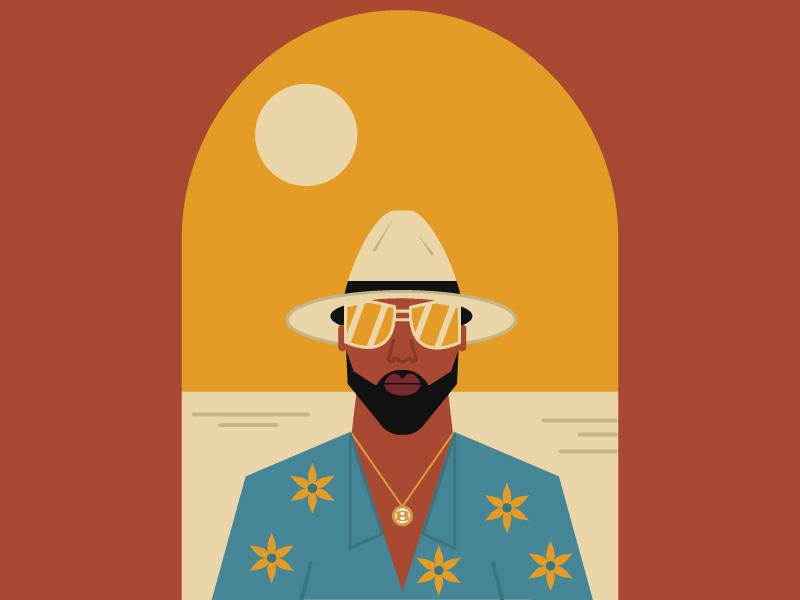
3 minute read
DADDY’S HOME
DADDY’S HOME “Every guy’s crazy ’bout a sharp dressed man” By Fraser Abe
Father’s Day may be June 21 this year, but Daddy’s Day? That’s year-round, baby. The rise of the daddy has been meteoric over the past 10 years – from the early 2000s twink (Toronto-area gays of a certain age might fondly remember 5ive, the gay bar that hosted many a twink night in the early ’aughts) to now, where national attention around daddies has hit a fever pitch.
The daddy is usually considered a man with salt-and-pepper hair who’s in decent shape (or at least sporting the now infamous “dad bod” – a term made famous by Clemson University student Mackenzie Pearson in 2015), a bit older or at least able to take care of you – monetarily or…otherwise.
Of course, older guys tend to be the most iconic daddies: think of famous gays like Anderson Cooper, Tom Ford and Andy Cohen. But you don’t have to be older to be a daddy – for kids who grew up watching Zac Efron play perpetually boyish characters, seeing his new look of bleached blond hair and rippling muscles in films like Baywatch and The Beach Bum was all they needed to sigh, “Daddy.” Efron is the ripe old age of 32.
In 2016, a new term for daddy was born: Zaddy. It originates from Ty Dolla $ign’s song of the same name. A zaddy is similar to a daddy, but where a daddy can wear un-ironic Costco-bought New Balances and jeans with a cellphone holster, the zaddy is impeccably dressed. To paraphrase ZZ Top: “Every guy’s crazy ’bout a sharp dressed man.” Just as one seemingly needed be older to be a daddy, the term zaddy is similarly ageless. Zayn Malik, of One Direction and solo fame, is considered a zaddy by his many fans. Malik is even younger than Efron – he’s only 27 years old.
Daddies are all over the news. W Magazine published a comprehensive guide to the fashion daddy. Esquire has a compendium of daddy culture. SNL has featured multiple sketches with the term: in particular a Matt Damon-hosted episode where he plays host of the Westminster Daddy Show, which defines daddies as “men over the age of 46 with a little salt and pepper at the temples, some play money to throw around, and a smug, knowing smile that says, ‘I do sex good,’” and a Harry Styles-hosted episode where he plays a social media manager who accidentally comments “Wreck me daddy” on a picture of Nick Jonas. (That last sketch was written by Bowen Yang and Julio Torres – who. by the way, you should seek more of, but can see on SNL and in an HBO special called My Favorite Shapes, respectively).
The term daddy can also be thought of as a placeholder. The Cut, in their take on the term, say it’s “become a root word, that can be enhanced with an adjective, sort of like queen. (Sweater queen, circuit queen, size queen).” There are plenty of daddies out there now, all in various states of undress on Instagram in categories like burgeoning horticulturist plant daddies, up-and-coming self-care guru yoga daddies, and outdoorsy, Runyon Canyon on a Saturday hiking daddies.
Arguably the most famous kind of daddy is the sugar daddy, an older man who buys goods and services for their sugar babies in exchange for their own goods and services. The term is much older than you might think, stretching back almost 100 years to the 1927 Laurel and Hardy film Sugar Daddies, in which an oil tycoon wakes up after a bender, married and with a money-hungry daughter-in-law. Back in this century, the most iconic use of the term – at least to many LGBTs – is Shangela’s “sugar daddy” speech on the RuPaul’s Drag Race after-show Untucked. Long story short: Shangela doesn’t need a sugar daddy because she is… what? Sickening!
There are plenty of sugar daddies out there – this is, after all, one of the longest economic expansion in history. We’ll see how many of these sugar daddies survive the recession.
To our nation’s daddies: we salute you. And we promise, we didn’t touch the thermostat!









